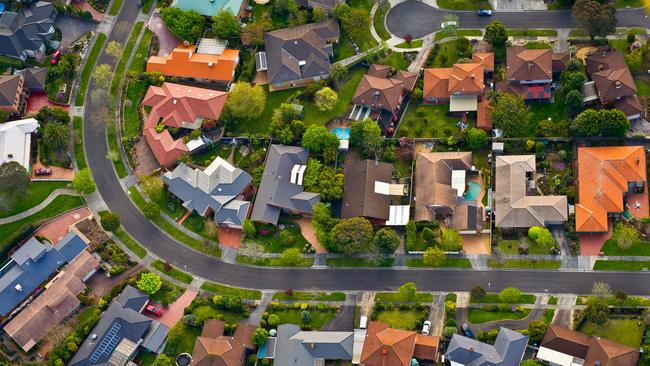Mortgage refinancing surges in outer suburbs in hunt for better home loan deals
Households in the outer suburbs of the country’s largest cities are driving a wave of mortgage refinancing as interest rate increases push bank customers to shop for better home loan deals.

Households in the outer suburbs of the country’s largest cities are driving a wave of mortgage refinancing as interest rate increases push bank customers to shop for better home loan deals.
Tarneit, a fast-growing suburb in Melbourne’s west, has had the largest number of mortgages refinanced since the start of the year, according to data from PEXA, the dominant settlement service.
Werribee, southwest of the Melbourne CBD, Craigieburn in the north and Cranbourne East in the southeast were next for refinancing activity, PEXA said.
In NSW, refinancing activity was highest in Kellyville, a suburb on Sydney’s northwestern fringe, followed by nearby Box Hill.
In Western Australia, refinancing was highest in Piara Waters, a suburb south of Perth.
The data provided to The Australian did not include Queensland, where postcode data is not mandatory for refinancing. The PEXA figures cover only instances where owners switch banks.
Mike Gall, the settlement service provider’s research head, said the areas with the highest activity were outer suburban “with high levels of development”.
“These areas are likely more exposed to rising interest rates, with borrowers in these postcodes motivated to look for a better deal on their home loan,” Mr Gall said.
The Reserve Bank’s decision to again lift rates – by 50 basis points to 2.35 per cent, its fifth increase in a row – was likely to push households to explore options “as mortgage-holders seek out discounts and cheaper options”, Mr Gall added.
“Even before the most recent lift in the cash rate, PEXA’s refinancing index had already hit a record high in the week ending September 4. A clear correlation is evident between this year’s interest rate rises and mortgage refinancing activity, indicating that households are responding directly and proactively.”
In June a record $18.16bn of mortgages were refinanced, according to the Australian Bureau of Statistics’ lending indicators.
The only regional postcode in the PEXA data was Alfredton, a suburb of Ballarat, where 901 mortgages were refinanced since the start of the year. That compares to 3381 in Tarneit and 1365 in Kellyville. The major banks are split on where the cash rate will peak. ANZ and Westpac forecast a rise to 3.35 per cent in December and February, respectively.
Economists at Commonwealth Bank and NAB expect a 2.85 per cent peak in November.
UBS economists expect a 2.85 per cent peak, with a rate cut of 50bp in the second half of 2023. Home prices would drop by 13 per cent and sales by 25 per cent in the bank’s base case, its analysts said in a note on Friday.
Data prepared by the investment bank’s Evidence Lab suggests the majority of mortgagees were ahead in repayments, while 29 per cent said they were “not ahead”. That has increased from 23 per cent in 2020, but below the 33 per cent recorded in 2018.
In November, stricter lending rules were rolled out by the prudential regulator after a continued rise in debt-to-income levels.
The Australian Prudential Regulatory Authority considers debt-to-income ratios of six and over to be risky.
Its latest exposure report, released last week, shows 22.1 per cent of new mortgages had a debt-to-income ratio considered to be risky. That is a fall from 23.1 per cent for the three months to March 31 but higher than the 21.9 per cent reported in the three months to the end of June 2021, one year earlier.
Loans with a loan-to-value ratio of 90 per cent or more came in at 6.4 per cent for the June quarter, the data shows, down 2.2 percentage points, year on year, as a proportion of all new term loans.
Sally Tindall, the research director at RateCity, said families “feeling the squeeze” from the repeated rate hikes were likely to be the ones refinancing.
“These people know they don’t have to take the rate hikes lying down. They’re being proactive,” Ms Tindall said. “Banks are frequently cutting rates for new customers and you’d be amazed how quickly a customer can have a stale rate … they take advantage of the loyal and complacent borrowers.”
Ms Tindall said consumers refinancing must ask their banks whether the rate includes the latest interest rate hike.
RateCity estimates the average variable rate borrower with a $500,000 loan who has not renegotiated it since the rate hikes began could save $6185 in the next 12 months by refinancing to the lowest variable rate loan on the market. She said 25 lenders had cut at least one variable rate for new customers, including CBA, Westpac, NAB and ANZ.






